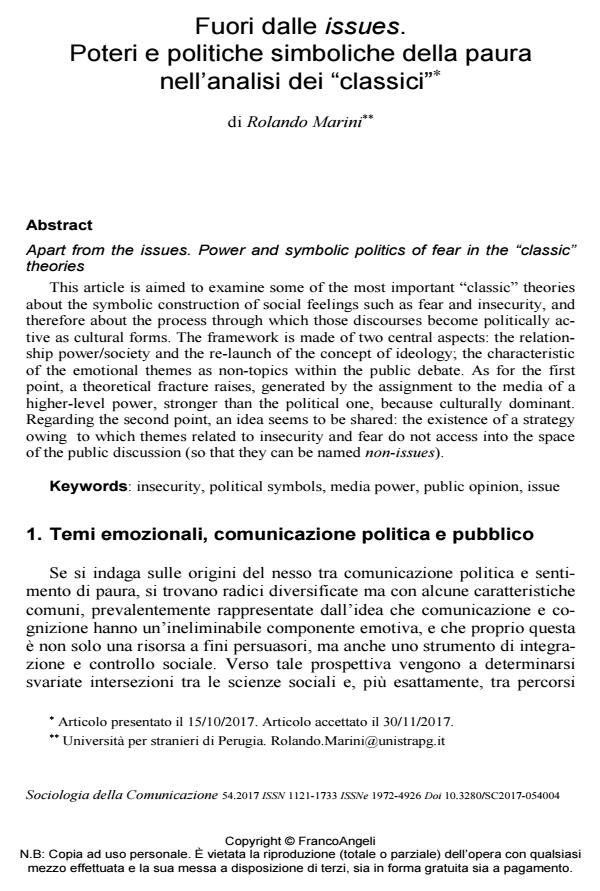Fuori dalle issues. Poteri e politiche simboliche della paura nell’analisi dei "classici"
Titolo Rivista SOCIOLOGIA DELLA COMUNICAZIONE
Autori/Curatori Rolando Marini
Anno di pubblicazione 2018 Fascicolo 2017/54
Lingua Italiano Numero pagine 24 P. 40-63 Dimensione file 108 KB
DOI 10.3280/SC2017-054004
Il DOI è il codice a barre della proprietà intellettuale: per saperne di più
clicca qui
Qui sotto puoi vedere in anteprima la prima pagina di questo articolo.
Se questo articolo ti interessa, lo puoi acquistare (e scaricare in formato pdf) seguendo le facili indicazioni per acquistare il download credit. Acquista Download Credits per scaricare questo Articolo in formato PDF

FrancoAngeli è membro della Publishers International Linking Association, Inc (PILA)associazione indipendente e non profit per facilitare (attraverso i servizi tecnologici implementati da CrossRef.org) l’accesso degli studiosi ai contenuti digitali nelle pubblicazioni professionali e scientifiche
This article is aimed to examine some of the most important "classic" theories about the symbolic construction of social feelings such as fear and insecurity, and therefore about the process through which those discourses become politically active as cultural forms. The framework is made of two central aspects: the relationship power/society and the re-launch of the concept of ideology; the characteristic of the emotional themes as non-topics within the public debate. As for the first point, a theoretical fracture raises, generated by the assignment to the media of a higher-level power, stronger than the political one, because culturally dominant. Regarding the second point, an idea seems to be shared: the existence of a strategy owing to which themes related to insecurity and fear do not access into the space of the public discussion (so that they can be named non-issues).
Parole chiave:Insecurity, political symbols, media power, public opinion, issue
- Silencing Refugees’ Voices in Educational Practices Valentina Tudisca, Adriana Valente, pp.79 (ISBN:978-3-031-73517-2)
- The public discourse on immigration in Italian school textbooks Adriana Valente, Valentina Tudisca, Silvia Caravita, in MONDI MIGRANTI 1/2022 pp.139
DOI: 10.3280/MM2022-001008
Rolando Marini, Fuori dalle issues. Poteri e politiche simboliche della paura nell’analisi dei "classici" in "SOCIOLOGIA DELLA COMUNICAZIONE " 54/2017, pp 40-63, DOI: 10.3280/SC2017-054004